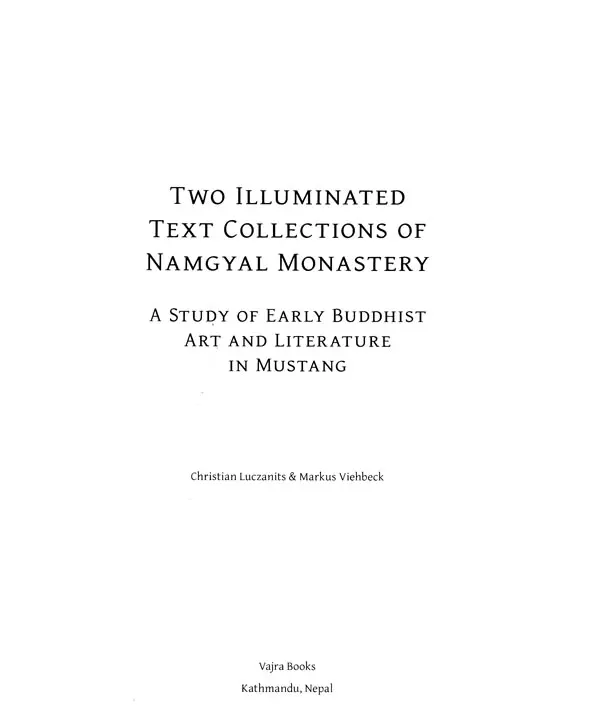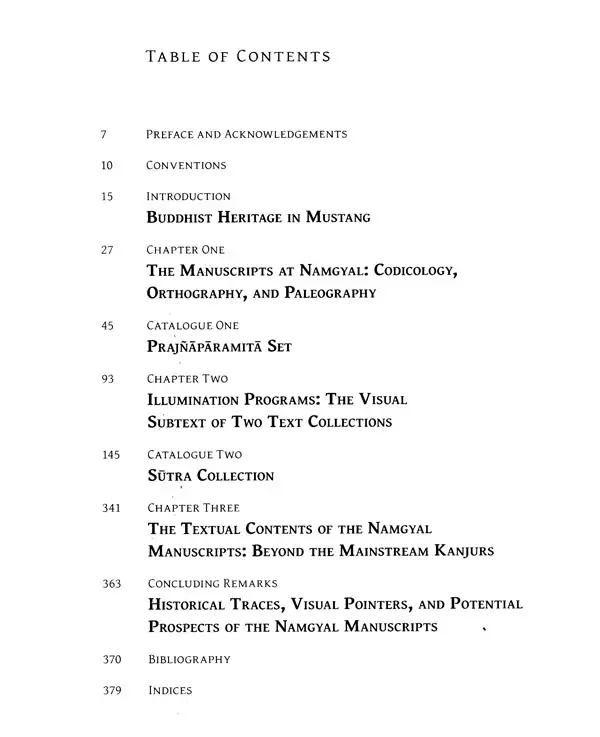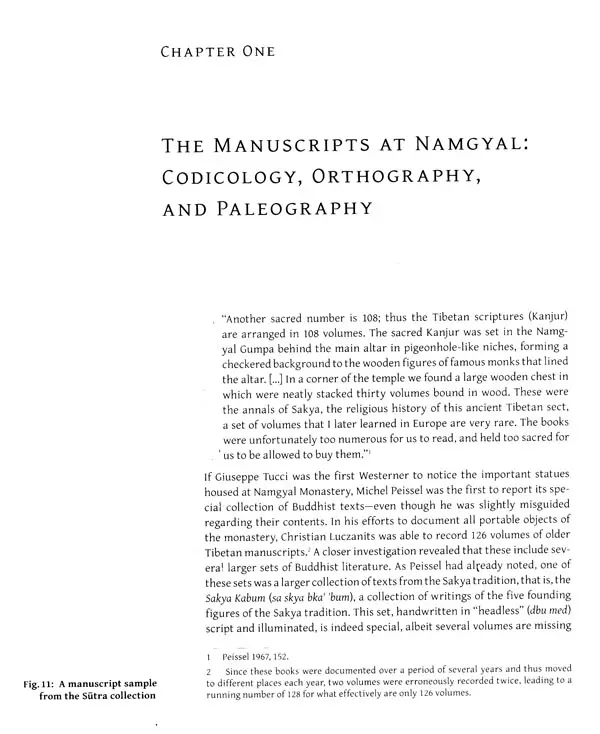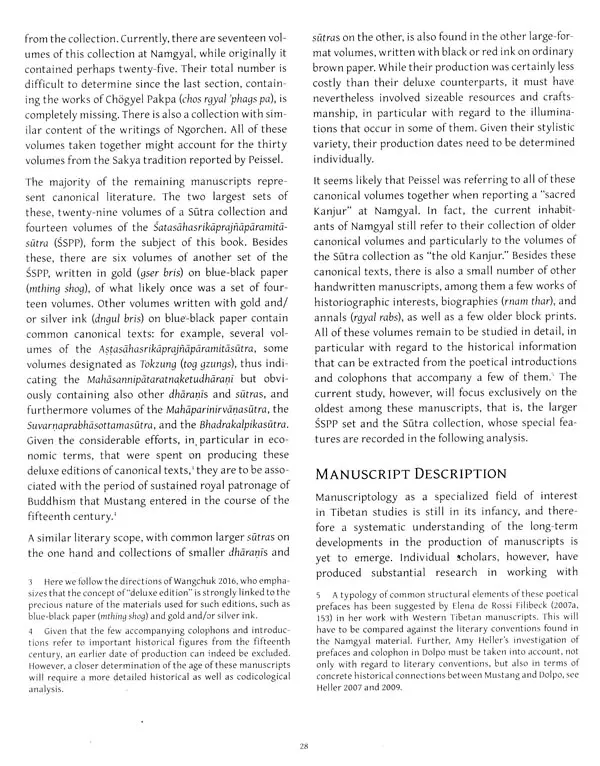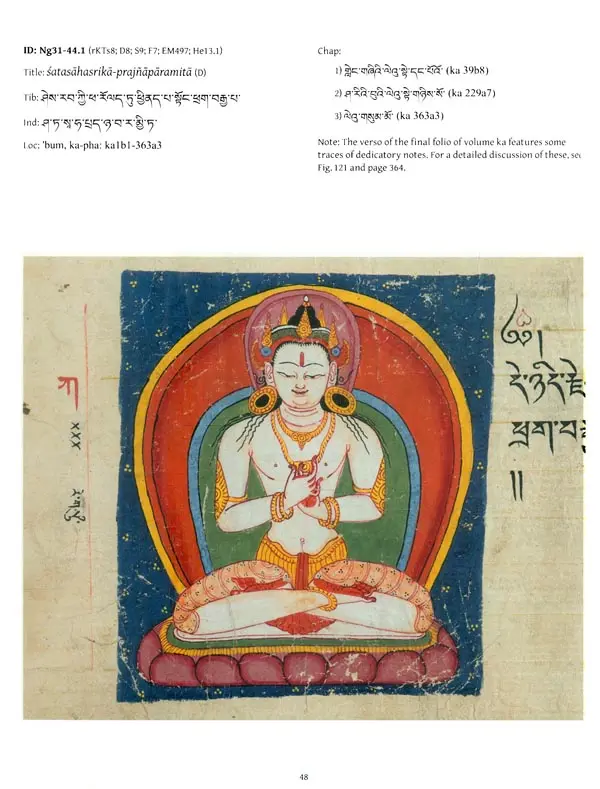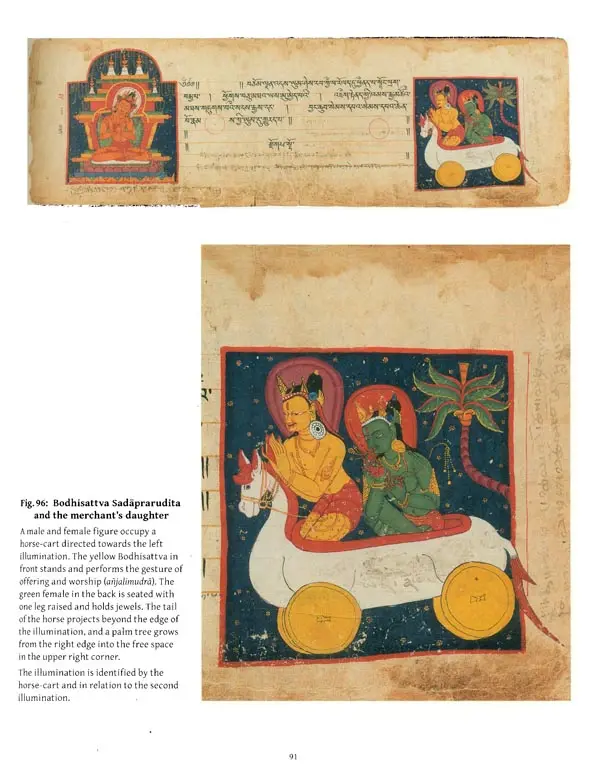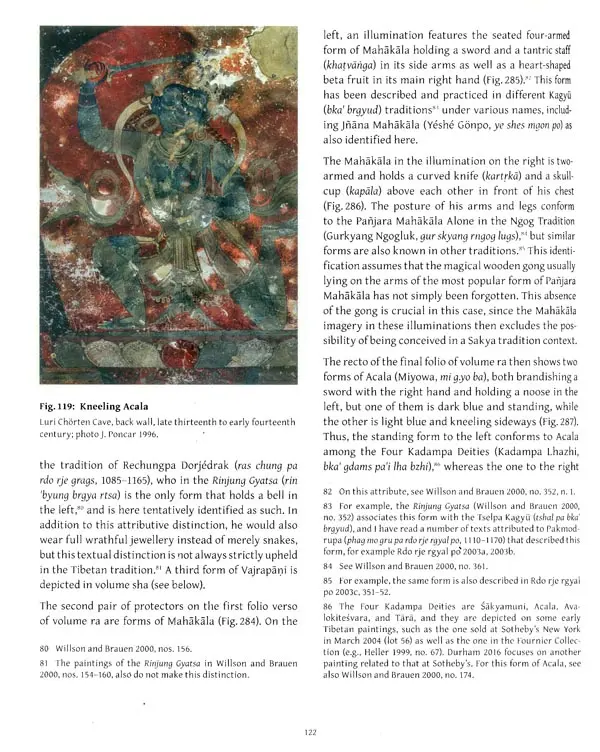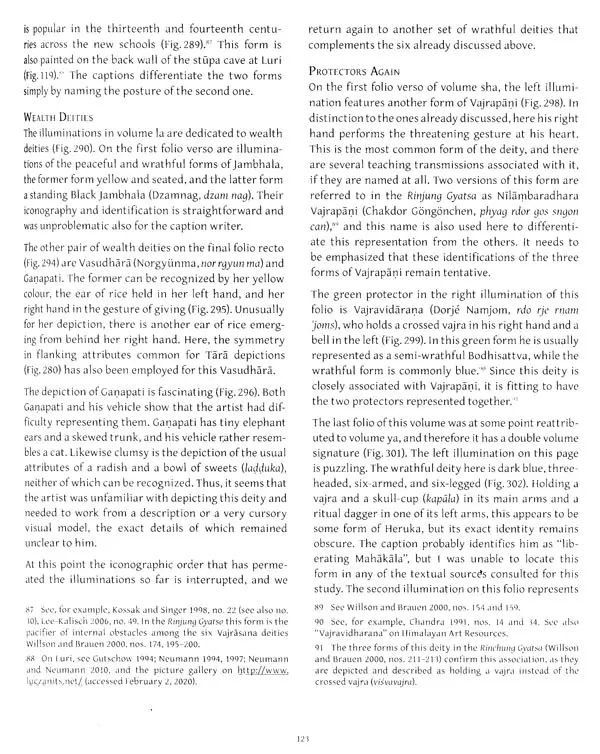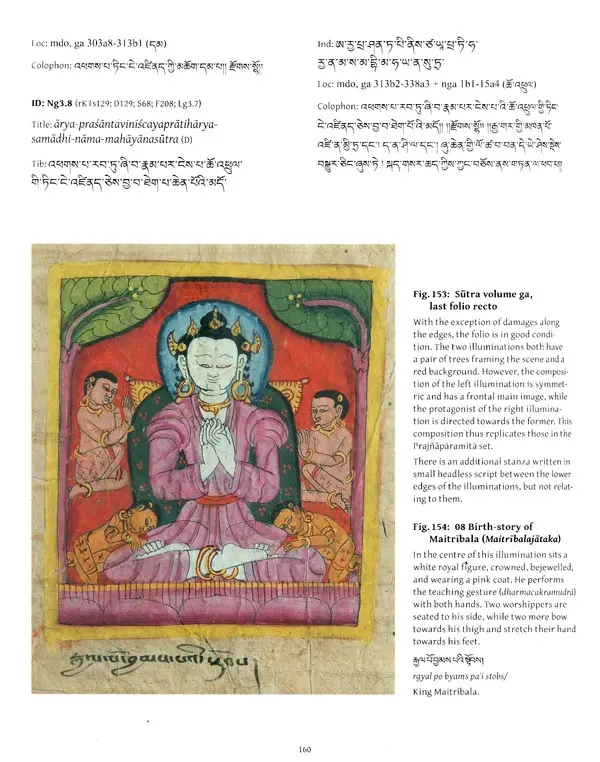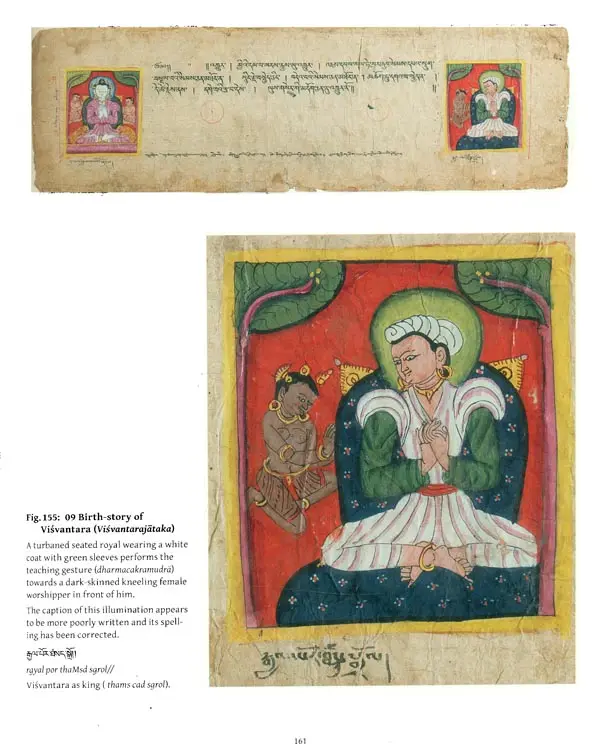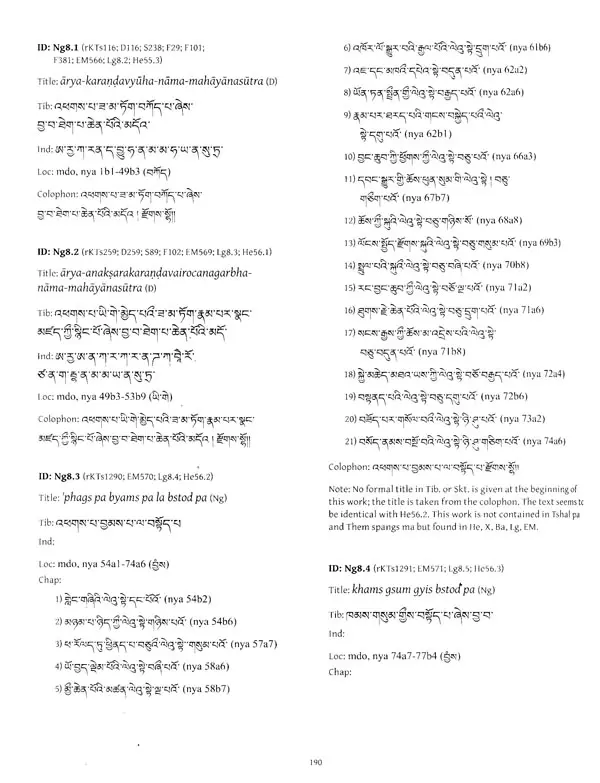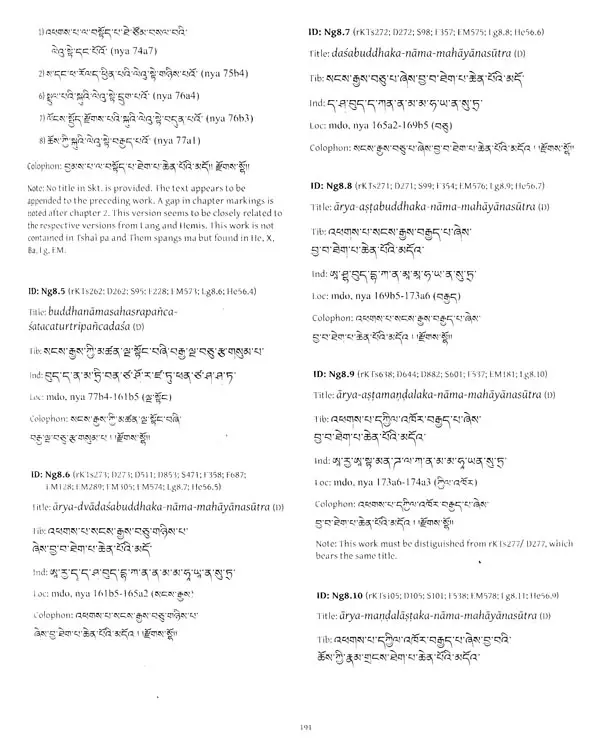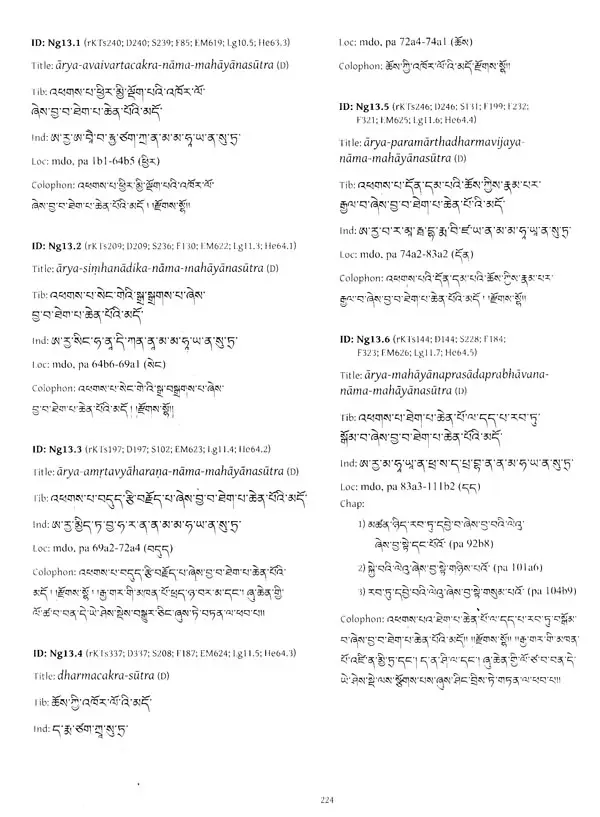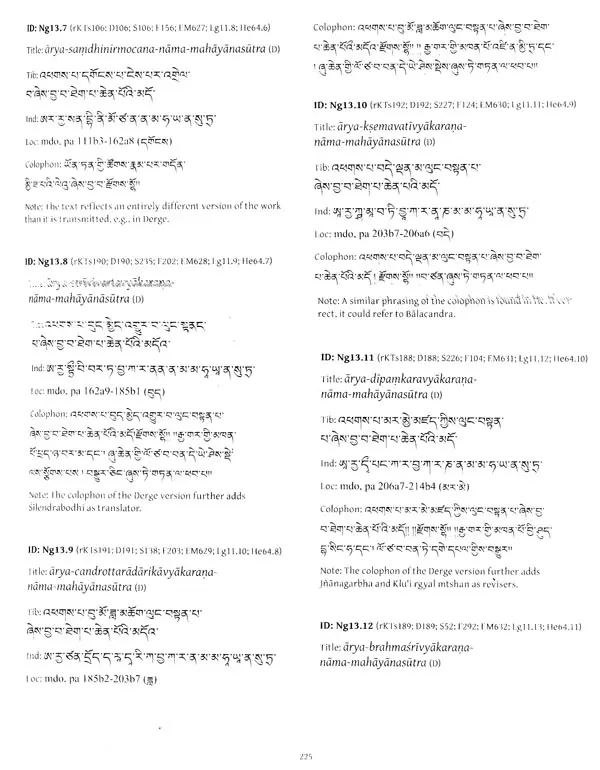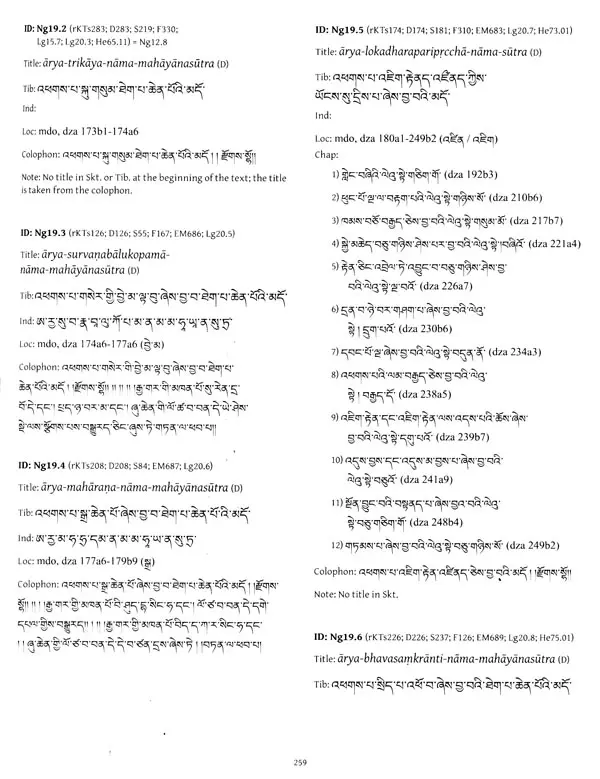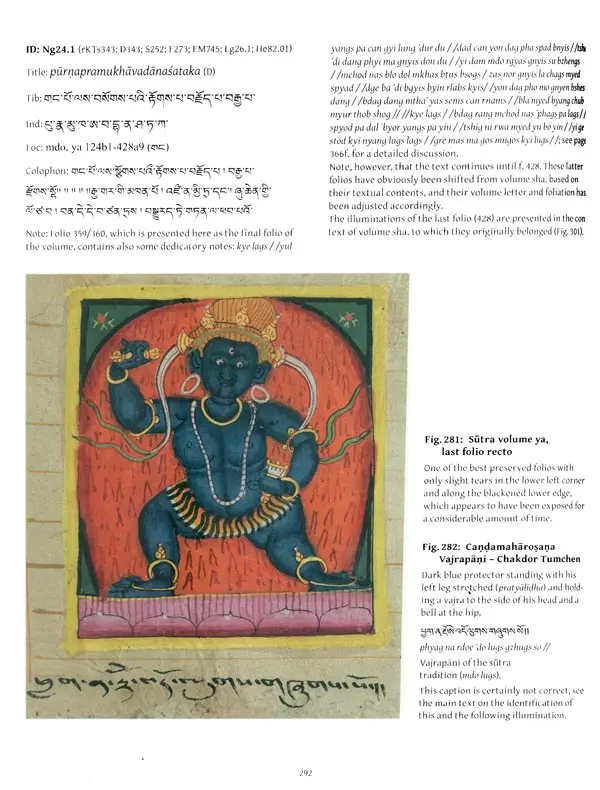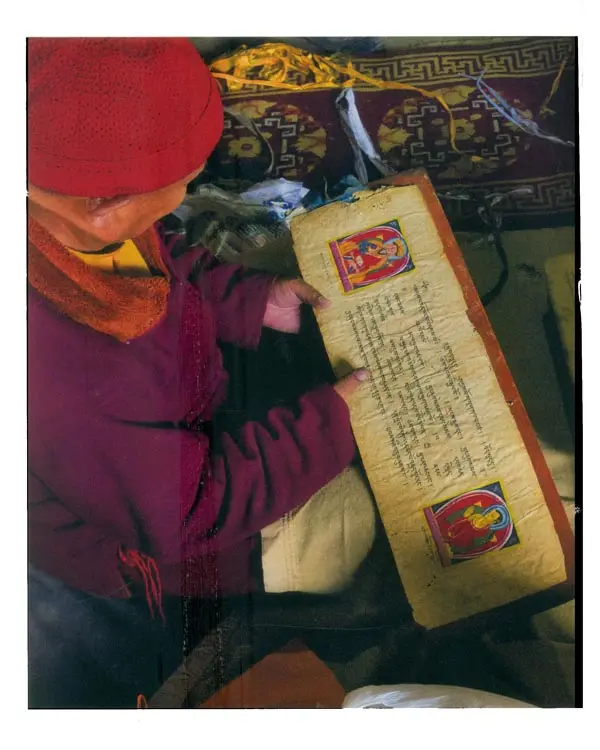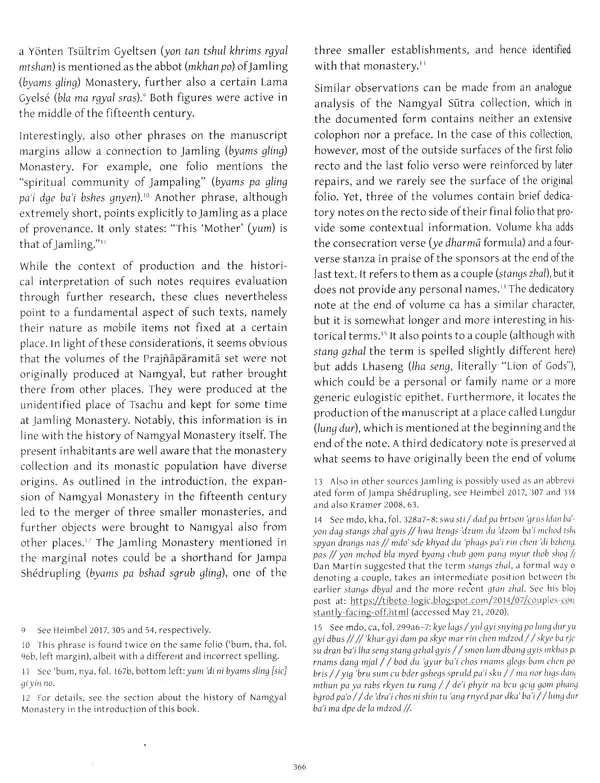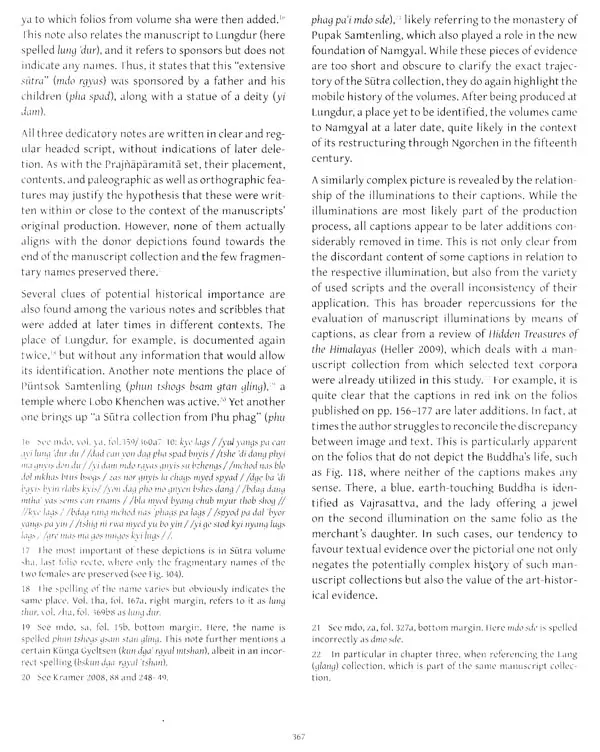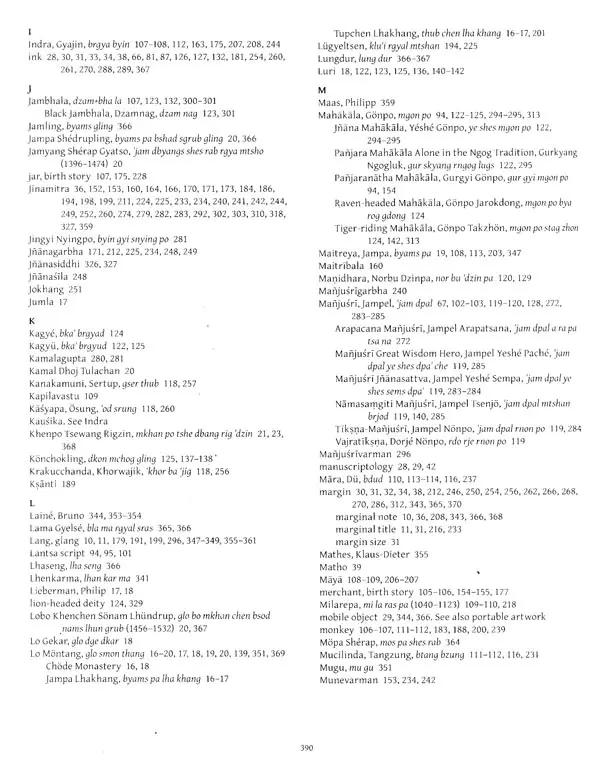
Two Illuminated Text Collections of Namgyal Monastery- A Study of Early Buddhist Art and Literature in Mustang
Book Specification
| Item Code: | UAG919 |
| Author: | Christian Luczanits and Markus Viehbeck |
| Publisher: | Vajra Books, Nepal |
| Language: | Tibetan Text with Sanskrit and English Transliteration |
| Edition: | 2021 |
| ISBN: | 9789937733243 |
| Pages: | 394 (Throughout Color Illustrations) |
| Cover: | HARDCOVER |
| Other Details | 10.00 X 8.50 inch |
| Weight | 1.64 kg |
Book Description
Markus Viehbeck works as a Postdoctoral Researcher at the Institute of South Asian, Tibetan, and Buddhist Studies, University of Vienna. His research interests address diverse topics within Tibetan intellectual history, Buddhist literature and philosophy, and the interlink age of religious and social history, with a focus on working with textual sources. In his current project, he studies manuscripts of Tibetan canonical literature and contributes to building up a comprehensive database for Resources for Kanjur & Tanjur Studies (rKTs).
The documentation of the two text collections investigated in this volume was initially facilitated by the collaborative spirit of the monastic body of Namgyal Monastery and its abbot Khenpo Tsewang Rigzin. In fact, it was the Khenpo who in 2014 encouraged the examination of the books, which at that time were still assembled to the sides of the old temple's altar. This was during Christian Luczanits' third successive visit to the monastery, sup- ported by the Rubin Museum of Art, where he worked as a curator. Previous documentation work concerned the sculptures assembled at the altar, which were photographed at their location in 2012 and documented in detail in . 2013... The examination of ten volumes of texts in 2014 then emerged as a revelation, since each volume contained some form of art. More importantly, among them were several illuminated volumes of an age that preceded the , fifteenth century, and they seemed complete and well preserved. These obviously deserved increased attention in the context of the future campaigns.
Consequently, more than eighty volumes were examined and documented within six days in 2015, resulting in more than 10,000 photographs. This documentation included not only the covers, the beginnings, and the endings of all, the larger volumes in the collection but also a major part of the Sutra collection presented in this publication, which was digitized page by page in its entirety. The team at that time included jarosav Poncar, his long-time companion Bhirat Thapa, and Nawang Tsering Gurung from Gheling. The volumes which in that year were selected for the task of complete documentation were those that appeared fairly complete and contained multiple texts. Christian Luczanits had by then moved to the School of Oriental and African Studies, University of London, and the field work was enabled through a generous travel grant from Heritage Watch.
In 2016, a preliminary assessment of the textual con- tents of some of the Sutra volumes by Helmut Tauscher and Paul Harrison indicated the value of the collection, both for regional and historical contexts as well as for the broader developments of Buddhist canonical writings. In the same year, Christian Luczanits, together with Louise Tythacott, received a research grant from the Arts and Humanities Research Council (AHRC) on "Tibetan Buddhist Monastery Collections Today" (Grant Ref: AH!N00681X!1), which facilitated all subsequent trips and his personal research.
At the same time, Helmut Tauscher initiated a new research project in Vienna, entitled "Buddhist Kanjur Collections in Tibet's Southern and Western Borderlands" (P30356-G24), which was funded by the Austrian Science Fund (FWF) and focused on adding material from canonical collections in Mustang and Dolpo to the database of Resources for Kanjur & Tanjur Studies (rKTs), a central repository for Tibetan canonical literature created by Bruno Laine. This project enabled Markus Viehbeck to join the, team and work on the Namgyal material as well as other Himalayan collections.
In 2017, another field trip with members from both London and Vienna was undertaken to complete the documentation of the two text collections and document further volumes at Narngyal Monastery. During that trip, Markus Viehbeck digitized all fourteen volumes of the Prajfiapararnita set with the support of the Namgyal monks Sengge Gyeltsen, Tendzin Chapel, Khenrap Puntsok, and Ngakwang Chapel, while Jaroslav Poncar, Bhirat Thapa, Kunzom Thakuri, and Christian Luczanits completed the documentation of the remaining volumes of the Sutra collection. Thereby, the two text collections examined in this publication had been completely documented, and their study could begin. Namgyal Monastery again proved to be extremely generous and cooperative when it not only permitted the study of these text collections but also allowed making them openly accessible in a digital format among the Resources for Kanjur & Tanjur Studies. It also granted the publication of all the illuminations in this volume.
The people at Namgyal also kindly hosted us during our visits to the monastery, and numerous monks supported the work directly or indirectly by means of their caring hospitality.
The study of the illuminations profited from the documentation of other collections in the region, in particular the Tsarang Hevajra volume, the documentation of which was enabled by Jigme S.P. Bista, Maya Bista, and Kunzom Thakuri in 2012, and some of the books of Dzong Monastery lead by Khenpo Ngawang Choephel in 2019. Philip and Marcia Lieberman made their Mustang documentation of 1993 and 1994 available and donated their original slides to the archives of the School of Oriental and African Studies, University ofLondon.JaroslavPoncar provided his documentation of the cave at Luri and the temples of Lo Montang, the Pritzker Art Collective, as well as a Swiss private collection permitted the usage of one of their paintings as comparison. The Cleveland Museum of Art made their objects available under the Creative Commons license, and Ulrich von Schroder permitted the reproduction of his photographs of the objects in the Potala Palace. Finally, jaroslav Poncar granted the usage of his photographs of Namgyal monks reading and wrapping a book.
Regarding the analysis of the textual contents, this book benefited tremendously from the continuous sup- port of Helmut Tauscher, who contributed his advice on all aspects of this publication. The same holds true for Bruno Laine, who also helped to solve several technical problems in the analysis of the textual contents and the conversion of the catalogue data for publication.
Along with Toni Hagen, David Snell grove, and, later, Michel Peissel (Fig. 8), Giuseppe Tucci was amongst the first Western researchers to visit Mustang and to spread information about the remote Himalayan kingdom.' Located along the Kali Gandaki river, which separates Dhaulagiri and Annapurna by 'forming the world's deepest gorge, it always had a special position in fostering Transhimalayan connections between the Tibetan plateau and the Indian subcontinent. These connections are also reflected in Mustang's political history and its shifting affiliations. In the context of present-day Nepal, the term "Mustang" primarily denotes an administrative district that was created in 1962, but which is also found in earlier documents with a shifting range of applications.
Book's Contents and Sample Pages
